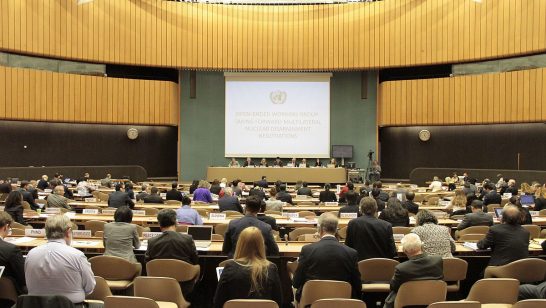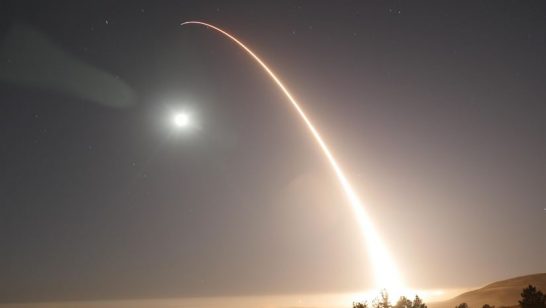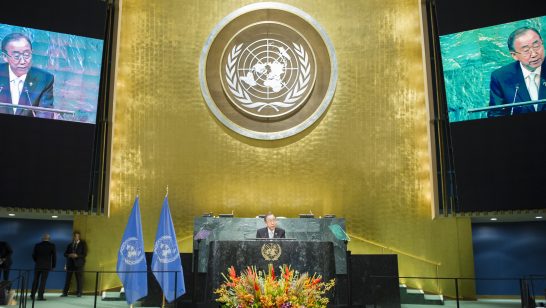
BASIC and the ELN have just published a joint report, “Changing Nuclear Weapons Policy in the Trump Era”. Sadly, the report is inaccurate and misleading in ways that ill-serve this important debate. Accordingly, it is important that ELN members are acquainted with the facts.
To begin, while noting that the Trump Administration’s re-look at US nuclear policy, the Nuclear Posture Review (NPR), is on-going and will not be released until early 2018, the report seeks to deduce the NPR’s results by patching together a pastiche of press reports. It would have been far more prudent to await the NPR’s publication and to analyze what it actually says rather than leap to controversial conclusions.
This said, the report’s major shortcomings can be grouped into three major categories.
First, the report’s discussion of arms control issues occurs in a vacuum.
- While it highlights potential US responses to Russia’s violation of the landmark 1987 Intermediate-range Nuclear Forces (INF) Treaty, the report does not note that the potential responses – as made clear recently by Secretary of Defense Mattis – are being discussed as a means of convincing Moscow to return to compliance with the Treaty rather than as a desired outcome in their own right. (Interestingly, in reprovingly mentioning the initial controversy surrounding NATO’s deployment of Pershing 2 ballistic missiles and ground-launched cruise missiles [GLCMs] in the 1980s, the report fails to state that it was those very deployments which convinced Moscow to negotiate and sign the INF treaty in the first place.)
- The report also quotes without dissent researchers claiming that the new Russian INF systems “would not immediately alter the overall military balance between NATO and Russia, given the general conventional military superiority of NATO”. This statement misses the essential point: the considered policy decision by the Russian government to violate the foundational arms control treaty of the late Cold War era represents a hugely significant political choice regardless of its short-term military implications. Furthermore, repeating the myth of “NATO military superiority” underscores the report’s lack of analytic rigor. At no point along the long border the Alliance shares with Russia does NATO have any degree of superiority; rather, the opposite is true: Russia enjoys local military superiority, something which Putin and his military and intelligence hierarchy know full well.
- The report notes that Russia “views the [INF] treaty as particularly burdensome as it does not limit air-launched or sea-launched cruise missiles” and because it limits Russian deployments outside of Europe. Any statements such as these must be balanced by the facts: that the treaty limits US deployments on a worldwide basis too; that air-launched cruise missiles are limited by the 2011 New START treaty; that the US has no nuclear-armed sea launched cruise missiles (despite what the report says the retired TLAM-N nuclear SLCM cannot be returned to service); and that Russia has developed and deployed a new nuclear SLCM (more on that below).
- The report states that the United States had not shared intelligence on the Russian INF violations with its NATO allies until very recently (i.e., after March 2017). This is simply wrong. The United States has been discussing the Russian violations within the Alliance since early 2014 to my certain knowledge. The conversations have been rich and increasingly detailed and they are ongoing
- Finally, the report’s discussion of arms control fails to discuss or even to mention that Russia is a serial violator of arms control agreements. Today, Russia stands in violation of: the Helsinki Declaration; the Budapest Memorandum; the Istanbul Accord; the Presidential Nuclear Initiatives signed between George H.W. Bush and Gorbachev and then Bush and Yeltsin; the Vienna Document; the Open Skies Treaty; as well as the INF Treaty. It is necessary to recognize that Russia is making these choices if we are to craft a realistic strategy to respond to them.
Given this abysmal record of non-compliance, the onus for improving the conditions for arms-control surely rests far more upon Moscow than it does on Washington or NATO more broadly.
Second, the report’s discussion of US nuclear policy similarly occurs without context.
- The report evinces concern that the NPR will step away from President Obama’s 2009 Prague Initiative and his subsequent 2010 NPR; in those documents Obama called on the world’s nuclear weapons states to reduce the role of nuclear weapons in their national security policy. Only the US and British governments took up President Obama’s suggestion; the Russian government took another tack (as did, incidentally, the Chinese, Indian, and Pakistani governments) — increasing the role nuclear weapons played in its national security policies.
- Moscow rolled out a controversial new military doctrine during the last decade featuring use of low-yield nuclear weapons to end a conventional conflict with a peer competitor (i.e., NATO). Russian exercises over the past ten years have featured the use of nuclear weapons against NATO countries. Senior Russian military and political officials have indulged in nuclear saber-rattling threats against NATO countries in language unheard since the Khrushchev era. Russian nuclear strategic bombers have routinely violated NATO airspace for years.
- In addition, Russia has been engaged since 2010 in a massive modernization of its nuclear forces. It is currently deploying, that is fielding today, at least two new types of land-based intercontinental ballistic missiles (ICBMs), a new class of ballistic missile submarines (SSBNs) three of which are in the water, two new types of sea-launched ballistic missiles (SLBMs), new strategic bombers, and a new long-range dual-capable air-launched cruise missile. It is developing a new destabilizing and highly MIRVed so-called “heavy ICBM” to replace the existing and de-stabilizing SS-18. A new rail-mobile ICBM is also reportedly under development, although the program may be at risk financially. Russia has also deployed a short-range dual-capable ballistic missile, a new dual-capable sea-launched cruise missile, and the INF treaty violating ground-launched cruise missile. Russia’s investment in low-yield nuclear weapons to mount on these shorter range systems underscores the seriousness of the new military doctrine which features their use.
- In light of the above, the US policy which emerges from the NPR will almost certainly have to address the realities of Russian policy rather than continued pursuit of a hope which was never realized. Indeed, it is important to emphasize that the Obama Administration began making such an adjustment in its later years.
Finally, the report’s treatment of US modernization programs provides no context for them and contains information that is simply wrong.
- The discussion of US modernization does not inform the reader that the program is necessitated by the fact that the George W. Bush and Obama administrations did not engage in what had become a twenty year cyclical renewal of US strategic nuclear forces. As a result, the US triad now consists of Minuteman 3 ICBMs which were first deployed in the 1970s, aging B-52 bombers (with upgraded electronics but 50+ year old airframes), air-launched cruise missiles (ALCMs) deployed in the early 1980s with a designed service life of ten years, and the longest-serving class of SSBNs ever to be deployed by the US Navy.
- Planning for the replacement of these systems is underway, but the first products of the overall program – in sharp contrast to the Russian programs discussed above but not mentioned in the report — will not be deployed until the mid-to-late 2020’s. (As an aside, the report criticizes the replacement of America’s ICBMs [incorrectly suggesting that 666 are to be deployed whereas the correct number is between 400 and 450] as “contribut[ing] to the [Russian] perception that the US seeks to achieve nuclear dominance” – an absurdity in the face of the overall Russian program, to include its new ICBMs.)
- The report perpetuates the inaccurate press articles which allege that US SLBM warheads have a new “super-fuze” which enhances first strike capabilities. Those press stories are simply not true. The replacement fuze program – which is ongoing and has been for some time — does not provide a first strike capability nor would US policy endorse such.
- Without referencing the myriad Russian dual-capable cruise missile programs, the report suggests the replacement system for the existing US air-launched cruise missiles is destabilizing because it could confuse an enemy as to whether an attack was conventional or nuclear. Dual-capable cruise missiles have been deployed by many nuclear weapons states for decades. The idea that they are “de-stabilizing” is newly born with criticism of the ALCM-replacement program; it is certainly and demonstrably not a view held by Russian or Chinese leaders.
- The report describes the B-61-12 gravity bomb, the replacement for the existing weapons deployed in Europe, as a “more usable” nuclear weapon which might be “interpreted by Russia as an attempt to restore strategic dominance and re-establish a nuclear war-fighting capability” – calumnies frequently employed by Kremlin propagandists. Repeating these Russian criticisms is, to say the least, unhelpful and misleading. Nowhere does the report explain that the B-61-12 upgrade program principally involves replacing 1960’s era electronics with modern ones and adding a tail-kit which improves accuracy to offset a reduction in the weapon’s yield.
However ELN members ultimately view the NPR, they should:
- first, please, read it once it is published;
- second, pay attention to what the US Administration says and does officially about its nuclear deterrence policy; and
- finally, do the above with an eye to what is occurring within other nuclear weapon states, particularly Russia
To do otherwise creates unjustified confusion about an issue we simply cannot get wrong.
The opinions articulated above represent the views of the author(s), and do not necessarily reflect the position of the European Leadership Network or any of its members. The ELN’s aim is to encourage debates that will help develop Europe’s capacity to address the pressing foreign, defence, and security challenges of our time.



